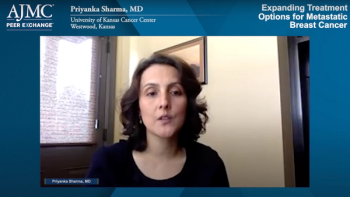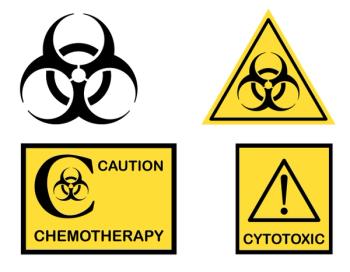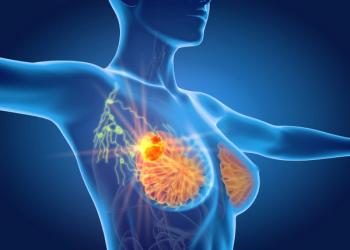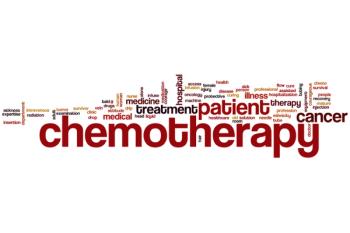
Breast Cancer
Latest News
Latest Videos

CME Content
More News






The FDA approved Phesgo (pertuzumab/trastuzumab/hyaluronidase-zzxf) as a subcutaneous (SC) treatment for adult patients with metastatic human epidermal growth factor receptor 2 (HER2)-positive breast cancer or early-stage HER-2 positive disease. The treatment combines 2 monoclonal antibodies in a single SC injection.

Results from an analysis of patients with breast cancer and coronavirus disease 2019 (COVID-19), from Institut Curie hospitals in France, show that mortality is determined more by comorbidities than previous or current treatment for the cancer.

Elevated insulin levels, which have been shown to promote tumor growth, due to insulin resistance may be linked to a greater prevalence of invasive breast cancer among black women compared with white women.

There is a positive association between having at least 1 chronic disease and adhering to guidelines for breast cancer screening, according to recently published study results.

Cases of triple-negative breast cancer (TNBC) account for up to 20% of all cases of the disease, the most common cancer diagnosed in women in the United States.

A 20-year follow-up comprising a secondary analysis to an original study shows that high-dose chemotherapy plus hematopoietic stem cell transplant benefit patients with high-risk stage III disease with 10 or more axillary lymph nodes involved.

Previous studies show that up to 75% of women with breast cancer exhibit disease- and treatment-related affects that include poorer cognitive function in the forms of psychological well-being, decision making, and adherence to treatment.

There are more than 50 drug regimens available to treat metastatic breast cancer but little guidance on the best order to deliver them, according to a study published in JCO Clinical Cancer Informatics.

Older age was shown to influence the decision among women to undergo surgery as a treatment option following a diagnosis of breast cancer in the United Kingdom, where the average lifespan was 82.9 years in 2016.

Following decades that saw its popularity dwindle in favor of subpectoral breast reconstruction, prepectoral breast reconstruction is once again on the rise.

In the 2 decades following their diagnosis for ductal carcinoma in situ (DCIS), women in a study out of England demonstrated a greater risk of invasive breast cancer and mortality compared with the general population. Overall, DCIS represents close to 20% of screening-detected breast cancers every year.

A majority of women younger than 45 years faced employment and insurance coverage difficulties following treatment for early stage breast cancer, with 35% fearing loss of health insurance coverage if they left their current job during treatment—despite wanting to continue working.

A small trial out of Columbia University Irving Medical Center shows encouraging recovery results among patients with breast cancer who contracted coronavirus disease 2019 (COVID-19), which was confirmed by reverse transcription-polymerase chain reaction, and/or high clinical or radiographic suspicion. Hospitalization was not necessary for nearly three-quarters of the patients.

Female survivors of breast cancer total over 3.5 million in the United States alone. Coronary heart disease is a leading cause of death among this patient group, as it is for all women.

Fatal breast cancers were reduced by 41% and advanced breast cancers by 25% following recommended screening for the disease by mammography in 9 counties in Sweden, emphasizing the importance of early detection.

Compared with tumors smaller than 8 mm among patients with hormone receptor (HR)-positive, ERBB2-positive (formerly HER2-positive) breast cancer, tumors between 8 and 10 mm benefited more from postoperative chemotherapy.

More than 20% of breast cancer survivors are severely affected by breast cancer–related lymphedema, with debilitating adverse effects that include depression, chronic pain, and recurrent skin infections—all affecting overall quality of life.

Coverage of our peer-reviewed research and news reporting in the healthcare and mainstream press.

In new data from the phase 3 EMBRACA trial presented yesterday at the American Association for Cancer Research annual meeting, researchers found that PARP inhibitor talazoparib exhibited no statistically significant benefit in the secondary end point of overall survival in patients with metastatic HER2-negative breast cancer and mutations in the BRCA1/2 genes.

An international team of investigators recently tried to answer this question, focusing on women with diagnosed early-stage disease and considered obese, with a body mass index above 30 kg/m2.















































